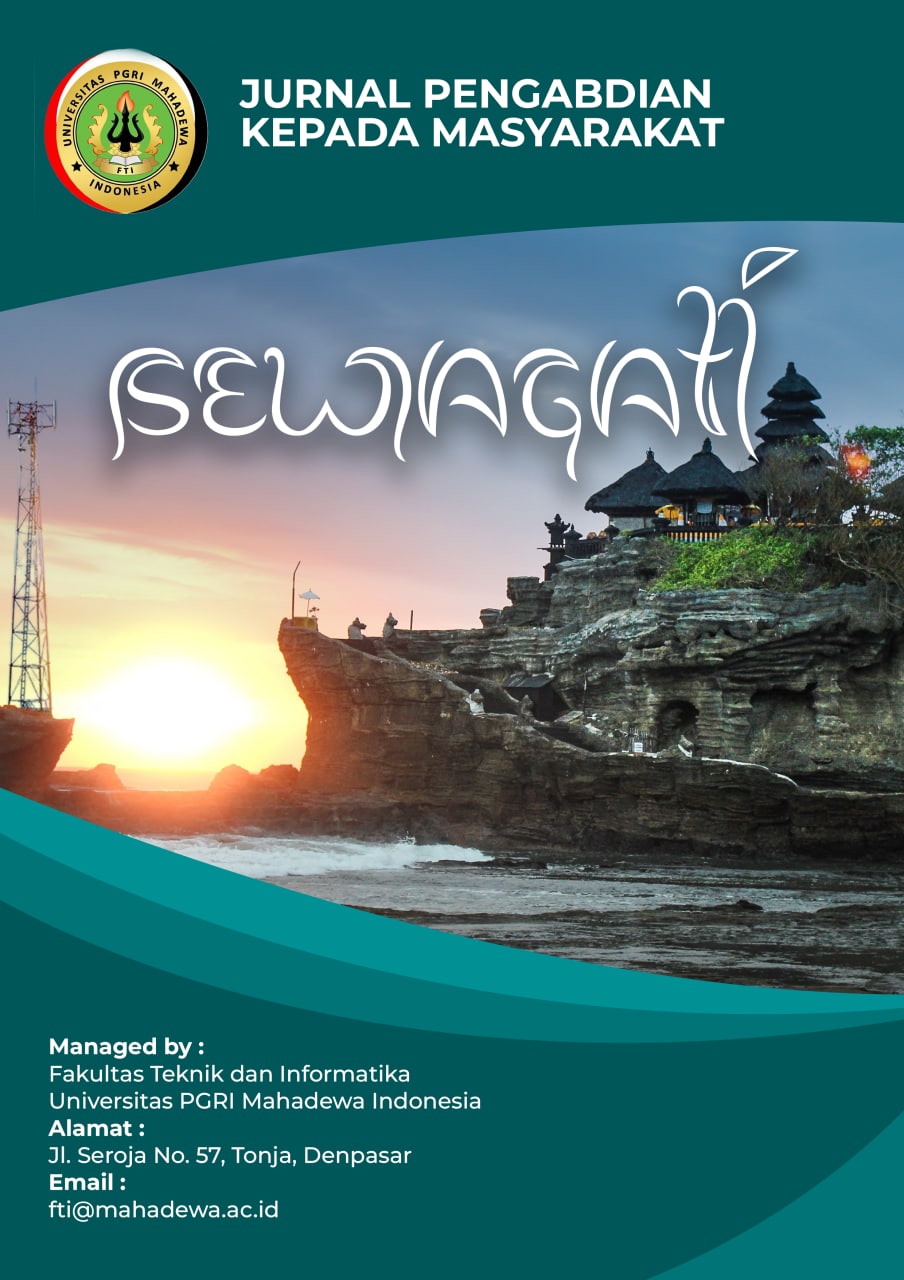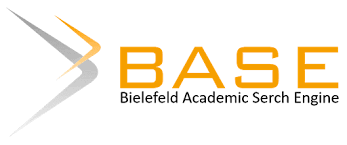PEMBERDAYAAN MASYARAKAT MELALUI PELATIHAN BUDIDAYA LEBAH MADU KELE-KELE (TRIGONA Spp.) DI DESA BATUAN KALER, KECAMATAN SUKAWATI, GIANYAR
DOI:
https://doi.org/10.59819/sewagati.v3i2.4437Keywords:
agrotourism, empowerment, trigona bee cultivationAbstract
Community empowerment is one of the important strategies in improving the social and economic welfare of the Batuan Kaler Village community. This study aims to develop the potential of the Batuan Kaler Village community, Sukawati District, Gianyar, through training in the cultivation of kele-kele honey bees (Trigona spp.). The training method involves a participatory approach that includes theoretical counseling, direct practice, and ongoing mentoring. Trigona spp. bees were chosen because of their simple maintenance, low cost, and honey production that has high economic value. The results of the activity showed an increase in community knowledge and skills in honey bee cultivation, as well as the potential for developing sustainable Trigona spp. honey-based micro-businesses. This program not only provides economic benefits but also contributes to environmental conservation through the sustainability of the bee ecosystem. This program is expected to provide further contributions and government support in developing markets for local honey products.
Downloads
References
Abrol, D. P. (2012). Pollination Biology: Biodiversity Conservation and Agricultural Production. Springer.
Crane, E. (1990). Bees and Beekeeping: Science, Practice, and World Resources. Heinemann Newnes.
Dewantari, M., Sumardani, N. L. G., & Suranjaya, I. G. (2020). Pengembangan Budidaya Lebah Madu Lokal “Kele-Kele” (Trigona Spp) Pada Masyarakat Pinggiran Hutan Di Kecamatan Pupuan Kabupaten Tabanan. Buletin Udayana Mengabdi, 19(1), 6–11. https://doi.org/10.24843/bum.2020.v19.i01.p02
Ginting, G., Tariningsih, D., & Lestari, P. (2020). Strategi Pemasaran Madu Kele-Kele di Home Industri Bapak Yustika Desa Kuwum Kecamatan Mengwi Kabupaten Badung. Agrimeta, 10(20), 49–55.
Michener, C. D. (2007). The Bees of the World. Johns Hopkins University Press.
Roubik, D. W. (2006). Stingless Bee Keeping: A Meliponiculture Manual. Smithsonian Tropical Research Institute.
Surata, I.K. (2017). Budidaya Lebah Madu Kele-Kele (Trigona spp.). Buku saku Pedoman Praktis.
Syaifudin, S. M., Normagiat, S.(2020). Budidaya pakan lebah Trigona sp. dengan apiculture agroforestry system di Kelurahan Anjungan Melancar, Kecamatan Anjungan Kabupaten Mempawah. Jurnal Ilmiah Pangabdhi, 6(1), 17-24. https://doi.org/10.21107/pangabdhi.v6i1.6932
Wahyuningsih, N., Wibowo, S., & Pratama, R. (2021). Pendampingan Budidaya Lebah Trigona untuk Meningkatkan Kualitas Madu. Jurnal Ekowisata dan Konservasi, 9(3), 102-115.
Widhiono, I., & Buchori, D. (2010). Potensi Budidaya Lebah Tanpa Sengat (Trigona spp.) di Indonesia. Jurnal Entomologi Indonesia, 7(1), 10-17.
Yulianti, R. (2018). Teknik Pemindahan Koloni Lebah Trigona dari Habitat Alami ke Stup Buatan. Jurnal Agroindustri, 14(3), 45-55.
Zuraida, A. (2020). Manfaat Ekonomi Budidaya Lebah Madu Tanpa Sengat. Jurnal Agribisnis Indonesia, 11(2), 112-120.
Downloads
Published
Issue
Section
License
Copyright (c) 2024 Gede Sidi Artajaya Sidi Artajaya, A.A. Istri Mirah Dharmadewi, Ni Ketut Erawati2

This work is licensed under a Creative Commons Attribution-ShareAlike 4.0 International License.
Authors who publish with the Jurnal Sewagti agree to the following terms:
1. Authors retain copyright and grant the journal the right of first publication with the work simultaneously licensed under a Creative Commons Attribution License (CC BY-SA 4.0) that allows others to share the work with an acknowledgment of the work's authorship and initial publication in this journal.
2. Authors are able to enter into separate, additional contractual arrangements for the non-exclusive distribution of the journal's published version of the work (e.g., post it to an institutional repository or publish it in a book), with an acknowledgment of its initial publication in this journal.
3. Authors are permitted and encouraged to post their work online (e.g., in institutional repositories or on their website) prior to and during the submission process, as it can lead to productive exchanges, as well as earlier and greater citation of published work. (See The Effect of Open Access) .




















